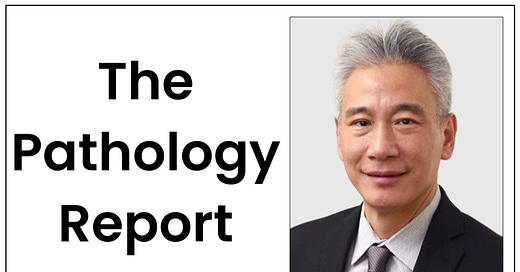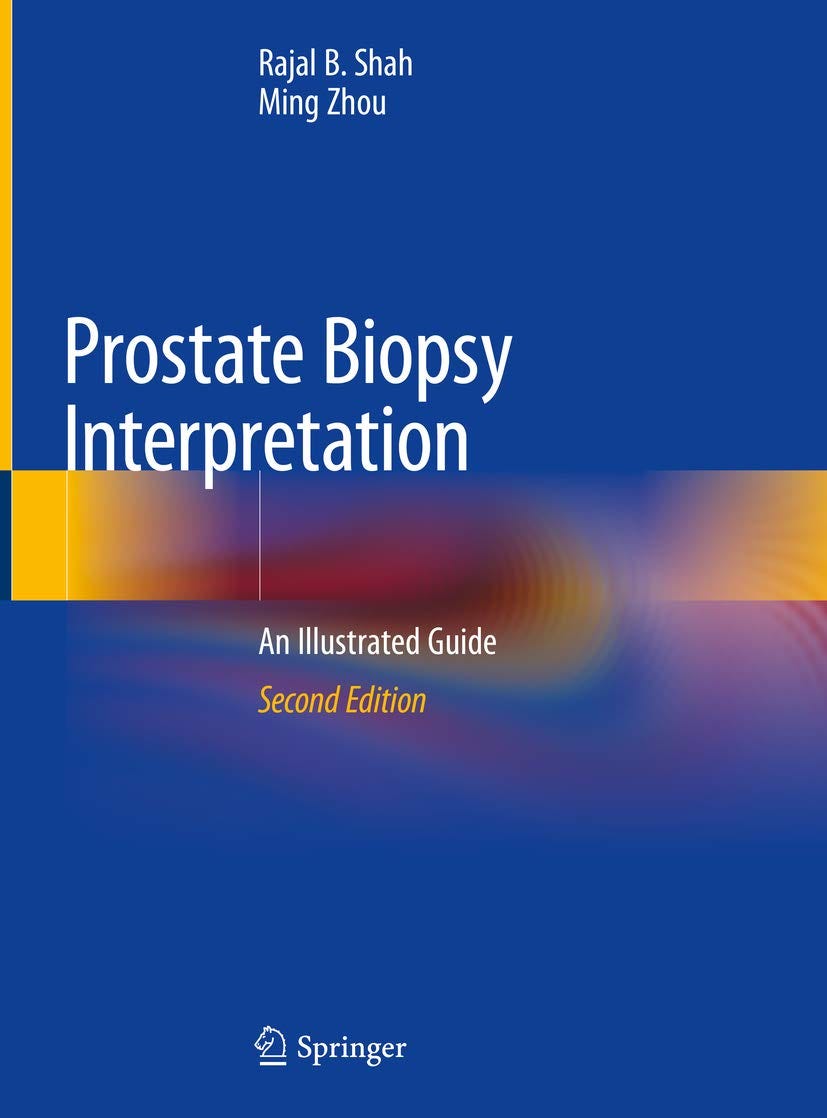Biopsy guru answers prostate pathology query--ASAP
By Howard Wolinsky
TheActiveSurveillor.com continues this week to roll out its series of Q&As with the experts on prostate cancer.
Dr. Michael Leapman, a urologic oncologist at Yale, was our lead-off hitter. Then came Dr. Antonio Westphalen, a top radiologist specializing in the prostate at UWashington.
In the No, 3 position this week is Dr. Ming Zhou, one of the world’s top genitourinary pathologists. The idea for these columns actually came from a note Dr. Zhou sent me this summer in which he asked how he could “give back” to the prostate cancer community. Among other things, I suggested this column.
Dr. Zhou is the Chair and Pathologist-in-Chief of the Tufts Medical Center, and Professor and Chair of the Department of Anatomic and Clinical Pathology, Tufts University School of Medicine in Boston. He has published over 200 peer-reviewed articles and numerous book chapters and edited five textbooks of urological and prostate pathology. He is currently a member of the United States and Canadian Academy of Pathology Board of Directors, and the immediate past President of the Genitourinary Pathology Society (GUPS), an international organization for urological pathologists.
Next in the batting order, will be our cleanup hitter Dr. Anne Katz, an author and certified sexuality counselor and Clinical Nurse Specialist at CancerCare Manitoba in Winnipeg, Canada,will launch “Sexuality and Surveillance.” Power hitter Dr. Stacy Loeb, of NYU, soon will write about “Lifestyle & Surveillance.”
Please send questions to mailto:pros8canswers@gmail.com
Keep the questions short and sweet. They should be of general interest. Sign with your real name, or just initials, tell me where you live, how long you‘ve been on AS, how it’s going for for you. Share a whimsical signature if you’re so inclined.
What is “atypical small acinar proliferation (ASAP)? Baffled in Baltimore
Dr. Ming Zhou:
In pathology reports, you may see a diagnosis of “atypical small acinar proliferation” (ASAP)”, also referred to as “atypical glans suspicious for cancer (ATYP)”, or “atypia, suspicious for cancer.”
Pathologists use the term to describe findings in prostate biopsy that are suspicious for, yet fall short of, prostate cancer.
What does “ASAP” mean?
ASAP means pathologists see something in prostate biopsies that they worry about, but are not 100% sure of, a cancer diagnosis. It could be a bona-fide cancer but too small to be diagnosed as such with certainty. Or it may be a benign lesion that masquerades as cancer.
How often the ASAP is diagnosed in prostate biopsies depends on pathologists’ experience and the use of ancillary diagnostic methods such as immunostains. It is reported in approximately 5% of prostate biopsies.
Patients with an ASAP diagnosis have a big chance of finding cancer, around 40%, in subsequent repeat biopsies. However, most cancers found after the initial ASAP diagnosis are:
Grade Group 1, and only about 26% of them are Grade Group 2 or greater. When ASAP is diagnosed in MRI-targeted biopsy, the risk for clinically significant cancer in repeat biopsy is very low.
However, no clinical parameters such as PSA or digital rectal examination can predict cancer in repeat biopsies.
What should be done with ASAP?
If ASAP is diagnosed in a biopsy whose other cores have cancer, or when the patient’s previous biopsy had cancer, ignore it.
If ASAP is the worst diagnosis, i.e., without cancer, in the 1st prostate biopsy, the National Comprehensive Cancer Network (NCCN) recommends additional biomarker testing such as PSA derivatives, Prostate Health Index (PHI), and 4Kscores and high-quality multiparametric MRI to assess the risk of cancer. If there is a high suspicion of cancer, repeated biopsy in 12–24 months with increased sampling of the ASAP site should be considered.
References:
NCCN Clinical Practice Guidelines in Oncology (NCCN Guidelines®)
Prostate Cancer Early Detection Version 2.2023 — September 26, 2023
Join me ringside at ZERO support group on AS in March
By Howard Wolinsky
For the past three years, support group moderators Joe Gallo, Jim Schraidt, and I have run a special Active Surveillance support group for ZERO. Last year, our virtual support meeting drew 60 patients to talk about AS. By far, it was the biggest session of any at the annual ZERO Summit.
I’m hoping we can beat that record at 11 a.m. Eastern on March 12, 2024 as part of ZERO’s annual Summit.
I’ve set up the meeting and figured why not put out the word early.
It also will help in planning. If we get over 100 sign-ups, I’ll have to convert to a webinar so no one gets turned away.
So sign up now and join us at 11 a.m. Eastern March 12 March.
Register in advance for this meeting:
https://us02web.zoom.us/meeting/register/tZUsfuqgrjIoG9AWf7voMhzT_UjdqbQQbQPA
Sound off about AS @ ASPI session
Join Active Surveillance Patients International for an open discussion on what’s on your mind about Active Surveillance at noon Eastern on Nov. 25.
Register here: https://zoom.us/meeting/register/tJ0vcOmgqTgqGddv2Wx1C1iw7icnQ-71mYEn#/registration
Message from a TheActiveSurveillor subscriber
"I support your work because you know WTF you are talking about and you have great sense of humor.” Anon.




